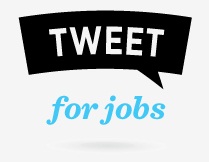Tweet on This, Congress

President Obama is asking his supporters to tweet at Congress to pass his jobs proposal. His campaign website has a tool that matches your ZIP code to your Members of Congress and provides a ready to tweet message directed at those Members. Just click and tweet.
Obama’s Tweet Congress tool is one of three recent efforts by the White House and the campaign to mobilize citizens to influence Congress. First Obama asked people to call Congress in a televised speech and now his campaign is asking us to tweet Congress.
Together with the recently launched White House: We the People petition site, the Tweet Congress tool represents the President’s move to embrace social advocacy as a means to outflank Congress. Social advocacy is using social media to deliver grassroots advocacy messages to lawmakers. Because the messages are delivered via public social media sites, the level of public exposure and accountability far exceeds advocacy when people call, email or write letters to Congress.
I have spent the past few years developing, implementing and training other people to use social advocacy strategies as part of their advocacy programs. Innovators like Jim Gilliam have built some incredible social advocacy tools: the Twitter petition tool Act.ly and the campaign website platform NationBuilder.com. And organizations, like the ENOUGH Project have used the strategy to get unlikely laws passed.
In response to the Obama campaign launching its Tweet Congress tool, bogus complaints from some right-wing blogs decry the effort a SPAM. As I said, these accusations are bogus. First, on a technical point, political speech is not SPAM. The CAN SPAM act outlaws commercial SPAM. But political messages are protected by the First Amendment (it always cracks me up when “defenders of the Constitution so grossly misunderstand the document).
Leaving aside the issue of constitutional rights, the idea that this is SPAM misses the point entirely. SPAM is when one marketer floods a gazillion email boxes with unsolicited advertisements. Or, on Twitter, when a marketer hijacks someone’s followers list to send unsolicited direct messages. Obama’s Tweet Congress tool facilitates citizens making a conscious choice to send a single public tweet at a Member of Congress.
Each person who uses the Tweet Congress tool chooses to enter their ZIP code in order to identify their Senators and Representative so they can send them a specific message from their own Twitter account. And, to ensure that the tweet is authentic and from the constituent, each person gets to read and edit the tweet BEFORE they send it.
That is not SPAM, that is real citizens exercising two of their key First Amendment rights: free speech and petitioning the government with grievances (most people don’t seem to remember this one).
So rather than decry Obama for this effort, we should applaud him. Instead of asserting that the people support his jobs proposal, he is asking the people to provide proof that they support it.
That sounds very democratic to me.
And if you doubt Obama’s commitment to listening to the people, note that he also added the We the People petition site to the official White House website. Any petition garnering 25,000 or more signatures WILL be addressed/answered by the president.
These steps are key for improving Americans’ sense of political efficacy. Too many of us do not believe that the government cares about our ideas. These tools make our ideas known to our government. How our elected leaders respond to these messages will be a measure of how much they really do care about what we want. If they care, our democracy will be all the healthier for it.





